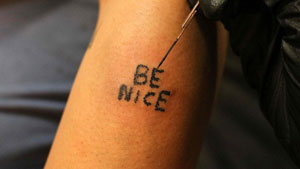There are a lot of people who want tattoo art on their body, but also need to stay within their budget. Stick and Poke tattoos are a reasonable solution that allows those individuals to have more ink without spending large sums of money.
Homemade DIY tattoos have been a part of many cultures for literally thousands of years. There is evidence that tattoos were being placed on the human body as early as 3370 BC.
The thing that most people wonder about these DIY tattoos is how long they last. The permanency of these body decorations is determined by many contributing factors.
What is a Stick and Poke Tattoo
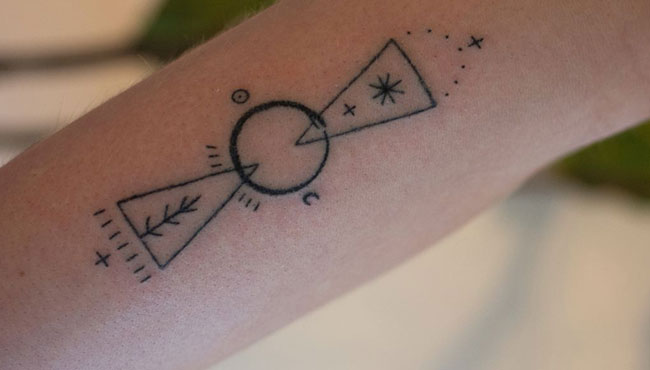
When someone references a stick and poke tattoo, machine-free tattoos, or “jailhouse tat”, they are referring to the method used to create the design. In stick and poke tattoos a needle is dipped into ink and then poked into the skin where the tattoo will be.
These tattoos can be created by just about anyone, but there are professionals who use this method. The professional tattoo artist uses a tattoo-grade needle to create the artwork. Other people may use sewing needles or sharp needles that have a small amount of thread woven around them to help them transfer the ink to the skin.
How Long Do Stick and Poke Tattoos Last
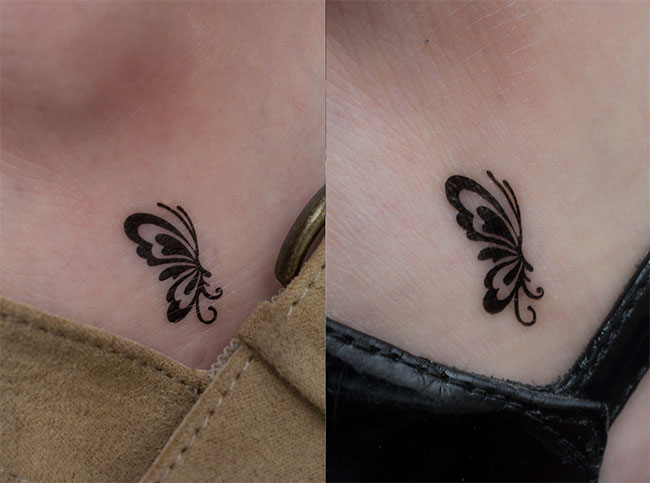
The traditional stick and poke tattoo will last between three and five years. After that amount of time, you will notice that the stick and poke tattoo inks are starting to fade and the artwork is not as vibrant and well-defined as it once was.
There are methods you can use to make your ink continue to look really good for a longer period of time. Those methods will include choosing the right application instruments, the proper ink, and the best location for the artwork to be created.
How to Make Your Poke Tattoo Last Longer
Use a Professional Tattoo Artist
To make certain that the body art you are about to get will last as long as possible you need to consider going to a professional tattoo artist to get the artwork. Professional artists use the highest-grade equipment and ink when they work. They also know the methods and techniques, such as placing the ink at the perfect depth under the top layer of skin.
Not every tattoo professional is experienced in the application of machine-free ink. Make sure the artist you are going to use has done this type of work before, and ask to see some photos of the artwork they created previously. Experience plays a large part in the longevity of the ink design. Check our in-depth review of the tattoo artist chairs that must be helpful for you.
Location
The body location that you choose for your new ink will play a part in determining how long the ink will last. If you want ink that lasts a really long time then you want to have it put on flatter areas of the body. Your forearms, upper arms, shoulders, back, and thighs will provide wonderful canvases for stick and poke ink jobs.
These areas of the body see less friction, and they are less abused than areas like the feet and hands. These areas are often placed into tight socks and gloves that rub at them and reduce the longevity of the artwork.
Depth
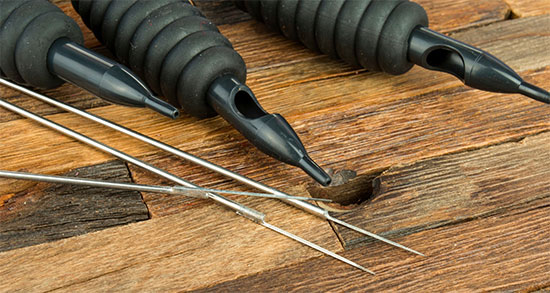
The ink has to be placed in the dermis of your skin. The dermis is located one millimeter below the surface area of your skin. It is crucial that the ink is placed here.
If the ink is placed deeper than the one-millimeter section of the dermis over time the tattoo will “blow out”. That means the crisp lines of the design will start to become sloppy and faded.
Aftercare
The care you give the artwork after it is completed will play a big part in determining how long the ink will stay vivid and beautiful. You need to do the following things to make sure your tattoo heals properly and the ink is protected.
- Cover a new tattoo with a bandage. For the first couple of hours do not remove this bandage.
- Always wash your hands with an anti-bacterial soap prior to touching the area that you are caring for.
- Clean the skin around the new ink gently and do not rub at the skin. You should wash the area once in the morning and once at night with a gentle antibacterial soap. Dab the area instead of rubbing.
- Keep the skin moisturized but do not put too much ointment on it. You should be applying a thin layer of ointment to the area after each cleaning. There is no reason to apply ointment more frequently than twice a day. You want to continue the moisturizing regimen for three to four weeks. This is vital to establishing a tattoo that does not quickly fade or become distorted.
- Do not scratch at the area and when a crust appears leave it alone and allow it to turn loose naturally. Do not pick off the crust. The itching sensation may last for 14-days or more. This is your body’s way of indicating that it is healing. You can slap the area with an open palm preferably with a layer of cloth between your palm and the tattoo. These slaps will bring some relief to the itching, but for the most part you should resist trying to stop the itch.
- Avoid exposing the new ink to sunlight. If you cannot cover the ink and have to be in the sun make certain that you use a sunscreen.
- Do not use a tanning bed for a period of at least two weeks after the artwork is completed.
- Avoid soaking the new ink in water for a period of two weeks. Take showers instead of baths and do not go into pools or hot tubs until your tattoo is completely healed.
- If you see the formation of bubbles stop applying any ointment. You should consult your tattoo artist to determine if everything is alright, but in the meantime make sure you uncover the tattoo and stop adding moisturizer. Sometimes the moisture can get trapped under the skin and bubbles form, much like the bubbles that form after a sunburn. Do not puncture the bubble but let it burst naturally and do not pull at the peeling skin that may surround the bubble after it burst. After the bubbles burst you can begin to apply a very light layer of moisturizing location because as the skin dries the tendency to flake and peel will be more predominant.
- Do not puncture the bubble but let it burst naturally and do not pull at the peeling skin that may surround the bubble after it burst. After the bubbles burst you can begin to apply a very light layer of moisturizing location because as the skin dries the tendency to flake and peel will be more predominant.
Once your tat is healed you still have some aftercare and precautions to take in order to increase the length of time the tattoo stays clear and concise. Do not overexpose your tattoo to the sunlight or to tanning beds. This exposure can increase the speed of fading of the ink, and this goes for stick and poke and electronically created body art.
What’s the Best INK to Make a Hand Poke Tattoo Last Longer
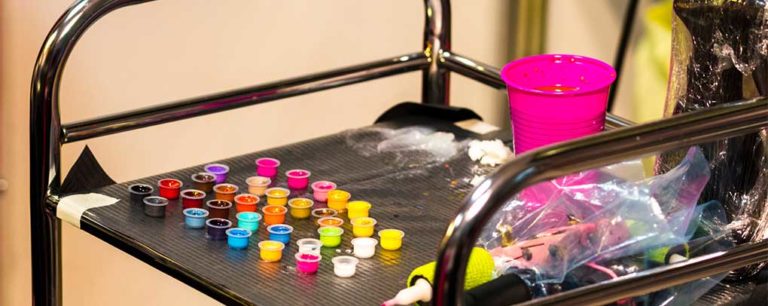
The ink that is used for the creation of body art makes a difference in the final look of the work, and how long the design will remain looking great.
Certified tattoo ink is always the best option for body artwork. If you want to use a slightly less expensive ink that is readily available to anyone the most frequently used ink for these procedures is India ink. India ink is a non-toxic ink derived from carbon-based ingredients. India ink is not expensive to buy. It is less likely to cause an infection when applied because it is sterile.
If you choose an ink other than India ink make certain you are getting a substance that is sterile and considered to be non-toxic. Do not use common household ink like the substance in your writing implements.

